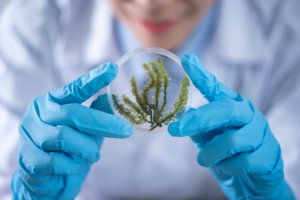Awesome science news from the web (31/08)
Once again, we bring you the awesome science news from the web; with tips on how to talk about these topics with kids – questions to ask and discussions to have.
“Judge a man by his questions, rather than by his answers. “
-Voltaire
1. Peeking into duck hearing
 Researchers are investigating how well ducks hear underwater in an attempt to save to 400 000 of them that get inadvertently caught in fishing nets and killed every year. A similar problem with whales was solved by making acoustic devices that send out ‘pings’ to warn them to swim away. In the study, ducks were trained to dive down to an underwater target and, if they heard a sound while down there, to swim to the surface and peck another target. They found that ducks hear well in the 1-3 kHz range, which unfortunately is close to the hearing range of fish. Link to story
Researchers are investigating how well ducks hear underwater in an attempt to save to 400 000 of them that get inadvertently caught in fishing nets and killed every year. A similar problem with whales was solved by making acoustic devices that send out ‘pings’ to warn them to swim away. In the study, ducks were trained to dive down to an underwater target and, if they heard a sound while down there, to swim to the surface and peck another target. They found that ducks hear well in the 1-3 kHz range, which unfortunately is close to the hearing range of fish. Link to story
| Sharing with kids: A very large number of ducks and other sea animals sadly get caught in fishing nets and die. Scientists have made underwater devices that warn whales of danger by making sounds they can hear. They wanted to do this with ducks but first had to find out how well ducks can hear underwater.
Questions to Ask: 1. How does sound reach your ear? 2. Do you think sound travels faster in air or underwater? Suggested Answer: 1. Sound needs particles (really tiny things) in a material in order to ‘travel’. Vibration (very tiny movements) of one particle hits a nearby one and causing it to vibrate, which then hits another one, and so on until the air particles near your ear also vibrate. 2. Water particles are more tightly packed than air particles. This means it’s easier for one water particle to pass on the vibration to the next one. |
2. Maths: the road from slum dogs to millionaires?
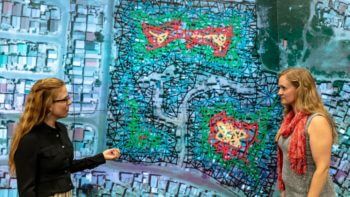 Urban planners are using a computer-generated mathematical model to come up with ways to eliminate existing slums and prevent future ones. Slums lack access to water, sanitation, and emergency services. The mathematical model suggests where new roads and paths should be built to maximize access to these essential services with minimal disruption and cost to residents. Link to the story
Urban planners are using a computer-generated mathematical model to come up with ways to eliminate existing slums and prevent future ones. Slums lack access to water, sanitation, and emergency services. The mathematical model suggests where new roads and paths should be built to maximize access to these essential services with minimal disruption and cost to residents. Link to the story|
Sharing with kids: Slums are places in the city where poorer people live. Slums do not have water, proper toilets, and easy access to hospitals. People who design cities are using maths to figure out the cheapest and convenient way to rearrange slums that have proper roads. This will make it easier to travel. They can put also pipes underneath them that carry water, sewage, and gas. Questions to ask: 1. What things should you keep in mind when redesigning slums? 2. If you could use maths to solve a big problem that many people have, what would it be? Suggested Answers: 1. Cost, time, where the residents will live in the meantime, how slum residents feel about making changes to their neighbourhood. 2. This is designed to make kids aware of the power to use STEM to change the world for better, and to get them to think of what their version of better would be!
|
3. Cooler average body temperature under hot debate
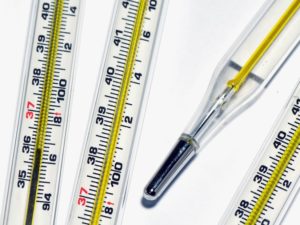 New evidence disputes the commonly accepted body temperature of 37⁰C (98.6⁰F), introduced 150 years ago. The original study was flawed as it used old mercury-based thermometers that were calibrated at a higher temperature than modern thermometers. The new study in healthy adults showed that average temperature is actually lower 36.5⁰C (97.7 ⁰C) and that fever starts at 37.5⁰C (99.5⁰C). Earlier studies with similar results have been ignored since people have become too accustomed to the original 37⁰C. Link to the story
New evidence disputes the commonly accepted body temperature of 37⁰C (98.6⁰F), introduced 150 years ago. The original study was flawed as it used old mercury-based thermometers that were calibrated at a higher temperature than modern thermometers. The new study in healthy adults showed that average temperature is actually lower 36.5⁰C (97.7 ⁰C) and that fever starts at 37.5⁰C (99.5⁰C). Earlier studies with similar results have been ignored since people have become too accustomed to the original 37⁰C. Link to the story
|
Sharing with kids: For 150 years, people thought the ‘normal’ body temperature when you’re healthy is 37⁰C (98.6⁰F ). Having a fever meant your body temperature was higher than normal – at 38⁰C (100.4⁰F) or greater. It turns out that using these numbers with modern thermometers is wrong because they came up with the original numbers using old thermometers made of toxic mercury. Modern scientists now think that normal body temperature is lower, 36.5⁰C (97.7 ⁰C), and that fever starts at 37.5⁰C (99.5⁰C). Questions to Ask: 1. What things might cause temperature differences in different healthy people? 2. Fever is your body’s normal reaction to sickness-causing germs. It prepares the body’s natural defense system to fight them. Do you think you should take medicine to stop fever when you’re sick? Suggested Answers: 1. Biological gender (higher in women), age (higher in children vs adults), time of the day (lower in the morning), and recent activities (higher after exercise), etc. 2. Some doctors think that you shouldn’t because it gets in the way of the body naturally defending itself. They think you should only take them if your temperature is abnormally high (>39⁰C/103⁰F) because that’s when it is harmful to your own body cells. |
4. AI takes the shock(!) away from aftershocks
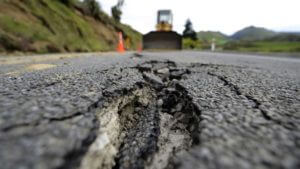 Scientists have found that machine-learning is better at predicting the location of earthquake aftershocks than the current standard method. Current methods can predict the size of aftershocks but not where they will happen very well. Scientists used a ‘neural network’ (a computing system inspired by real nerve cell networks in animal brains) that was trained on 131 000 earthquakes and their aftershocks. It was 45% more accurate than the standard method. Link to the story
Scientists have found that machine-learning is better at predicting the location of earthquake aftershocks than the current standard method. Current methods can predict the size of aftershocks but not where they will happen very well. Scientists used a ‘neural network’ (a computing system inspired by real nerve cell networks in animal brains) that was trained on 131 000 earthquakes and their aftershocks. It was 45% more accurate than the standard method. Link to the story
|
Sharing with kids: When an earthquake happens, it is followed by aftershocks. These are smaller earthquakes but can even be as deadly. We need to know when and where earthquakes and aftershocks happen so people can evacuate. Scientists are testing a new technique called machine-learning that is better than the current ways at guessing where the aftershocks will happen. Questions to Ask: 1. What causes an earthquake? 2. What is machine-learning? Suggested Answer: 1. We suggest watching this short video on earthquakes. 2. Machine-learning is a type of artificial intelligence that uses maths. It is based on the idea that computers can ‘learn’ from data to identify patterns to make predictions (i.e. what is going to happen?) and decisions without humans telling the computers what to do. |
5. Scientists rosy from new brain cell find
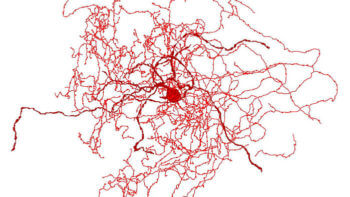 Neuroscientists have discovered a new type of small neuron in human brains. ‘Rosehip neurons’ were found on the top-most part of the cortex (the visible part with all the folds) during a bigger study inventorying brain neurons and their individual genetic signatures. The neurons inhibit other ones that receive excitatory signals. Rosehip neurons do not genetically resemble any known mice neuron, which suggests that they might allow humans to do things mice aren’t able to. Link to the story
Neuroscientists have discovered a new type of small neuron in human brains. ‘Rosehip neurons’ were found on the top-most part of the cortex (the visible part with all the folds) during a bigger study inventorying brain neurons and their individual genetic signatures. The neurons inhibit other ones that receive excitatory signals. Rosehip neurons do not genetically resemble any known mice neuron, which suggests that they might allow humans to do things mice aren’t able to. Link to the story
|
Sharing with kids: Neuroscientists (scientists that study the brain) have found a new type of neuron (nerve cell). They named it a ‘rosehip neuron’, because the parts that allow it to communicate with other nerve cells have many unusually large round points that look like rosehips. A rosehip is a fruit of the rose plant of which it can have many. Question to ask: How many neurons are in the human brain? Suggested Answer: 100 billion neurons – that’s 1 with 11 zeroes after it – which is roughly the same amount of stars in the Milky Way galaxy! |
Further reading: our last week’s science news from the web and our blog on the importance of science literacy.
Did you like what you read? Want more science delivered in fun ways? Follow us on different social media channels using the links below.
Better yet, subscribe to InquiBox to get different science mini-projects delivered home.





